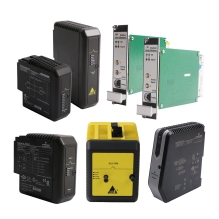Unlocking the Power: Discover the Secrets of Three-Phase Variable Frequency Drives!
In the realm of industrial automation and control systems, three-phase variable frequency drives (VFDs) play a pivotal role. These devices not only enhance the efficiency of electric motors but also offer remarkable flexibility in their operation. For anyone involved in manufacturing, HVAC systems, or any sector relying on electric motor-driven machinery, understanding three-phase VFDs is essential. This article aims to demystify the concept of three-phase VFDs, shedding light on how they function and their diverse applications across various industries. Whether you are a seasoned engineer or a curious newcomer, this exploration will equip you with the knowledge to appreciate the significance of these powerful devices in modern technology.

What is a Three-Phase Variable Frequency Drive?
A three-phase variable frequency drive (VFD) is an electronic device that controls the speed and torque of three-phase AC motors by varying the frequency and voltage of the electrical supply. At its core, a three-phase VFD converts the incoming AC power into DC power and then back into variable frequency AC power to drive the motor. This process allows for precise control over the motor's operational speed and performance, making it an invaluable asset in industrial settings. The basic components of a three-phase VFD include the rectifier, DC bus, inverter, and the control system. Each of these parts plays a crucial role in ensuring that the motor operates efficiently and responds dynamically to the demands of the application.
How Three-Phase VFDs Operate
The operation of a three-phase VFD involves several key steps that enable the control of motor speed. Initially, the VFD takes the incoming three-phase AC power from the electrical supply. This AC power is then routed through a rectifier, which converts it into DC power. The DC power is smoothed by a DC bus, which stabilizes the voltage before it is sent to the inverter. The inverter then converts the DC power back into variable frequency AC power, which is supplied to the motor. By adjusting the frequency of the output voltage, the VFD can control the speed of the motor; increasing the frequency allows for higher speeds, while decreasing it results in lower speeds. This conversion process not only facilitates speed control but also enhances energy efficiency, as the motor only draws the necessary power for its current operational demand. A friend of mine, who works in a manufacturing plant, shared how the installation of a three-phase VFD optimized their production line, leading to significant energy savings and improved output.
Key Components of Three-Phase VFDs
Three-phase VFDs consist of several essential components that work together to ensure optimal performance. The rectifier is responsible for converting the AC input into DC output, and it typically uses diodes or thyristors to facilitate this process. Following the rectifier, the DC bus serves as a storage point for the DC voltage, smoothing out fluctuations to provide a stable source for the inverter. The inverter, equipped with power transistors or IGBTs, converts the DC back into AC, allowing for the manipulation of frequency and voltage. Lastly, the control system, often utilizing sophisticated algorithms, monitors the motor’s performance and adjusts the VFD’s output to meet operational requirements. Together, these components form a cohesive system that embodies the versatility and efficiency of three-phase VFDs.
Applications of Three-Phase Variable Frequency Drives
Three-phase variable frequency drives are utilized across a myriad of industries, showcasing their versatility and effectiveness. In manufacturing, they are often employed to control conveyor belts, pumps, and fans, allowing for precise adjustments to speed and torque based on the requirements of the process. Additionally, in HVAC systems, three-phase VFDs help regulate the operation of fans and compressors, enhancing energy efficiency and maintaining optimal climate control. In the water and wastewater treatment sector, these drives control pumps to ensure efficient flow rates and energy conservation. The benefits of implementing three-phase VFDs extend beyond just operational efficiency; they also contribute to reduced wear and tear on equipment, leading to lower maintenance costs and extended equipment lifespan. A colleague of mine in the HVAC industry recounted how the integration of VFDs in their systems not only improved energy savings but also provided the flexibility needed to adapt to varying load conditions.
Significance of Three-Phase VFDs in Modern Industry
In summary, three-phase variable frequency drives are essential components in modern industrial applications, providing unmatched control and efficiency for electric motors. Their ability to regulate motor speed and torque not only enhances operational efficiency but also contributes to energy savings and reduced maintenance costs. As industries continue to evolve and seek smarter, more efficient solutions, the significance of three-phase VFDs will only increase. Understanding their functionality and applications empowers users to make informed decisions that can lead to improved performance and sustainability in their operations.







